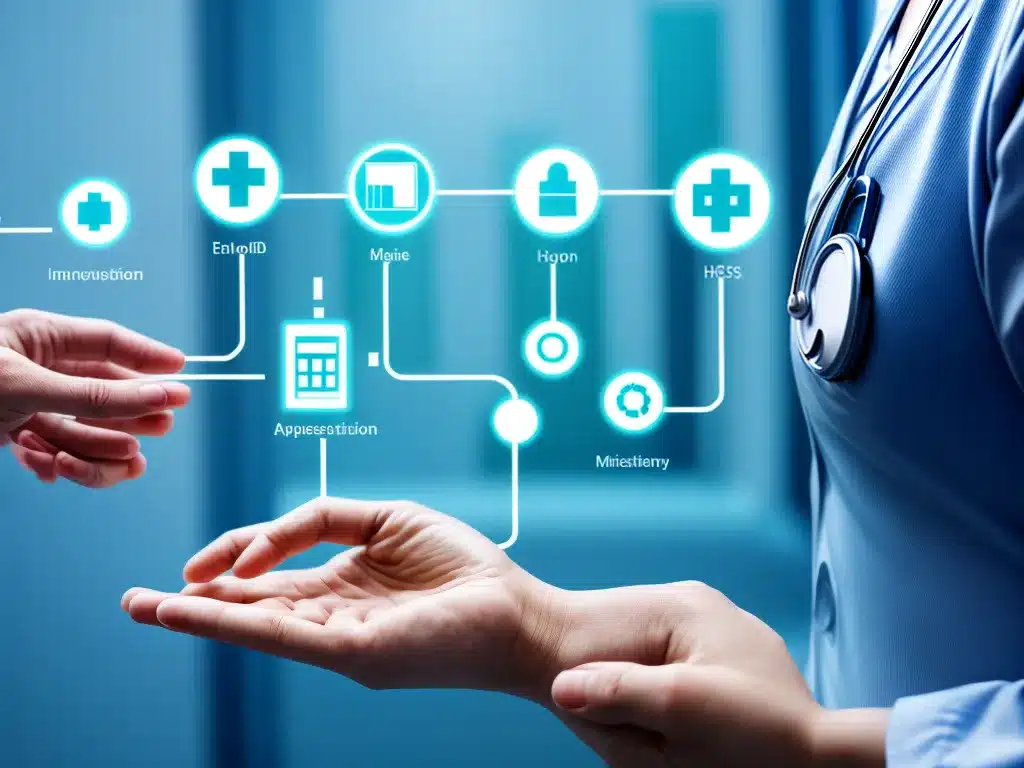
IoT Applications Transforming Healthcare
Introduction
The Internet of Things (IoT) is having a profound impact on healthcare. By connecting medical devices and applications to the internet, IoT enables the healthcare industry to improve patient outcomes and operational efficiency. In this article, I will provide an in-depth look at how IoT is transforming healthcare.
Remote Monitoring and Telemedicine
One of the most significant IoT applications in healthcare is remote monitoring and telemedicine. IoT-enabled medical devices can continuously measure a patient’s vital signs and other health metrics and transmit that data to healthcare providers in real-time. This allows doctors to monitor patients outside of medical facilities, enabling earlier interventions and reduced hospital visits and readmissions.
For example, diabetic patients can use IoT-connected glucometers to automatically log their blood sugar levels. If their readings become abnormal, an alert is sent to their doctor, allowing for proper adjustments to their care plan. Similarly, cardiac patients can be monitored through internet-connected ECG devices, notifying physicians if irregular heart rhythms are detected.
IoT also enables telemedicine, where doctors can remotely diagnose and treat patients using video conferencing and data from medical IoT devices. This expands access to quality healthcare for patients in remote areas.
Asset Tracking and Management
Hospitals often struggle with tracking the location and status of critical assets like medical equipment. IoT offers a solution through real-time location systems (RTLS) and RFID tags. Hospital assets can be tagged with IoT-connected RFID chips. Sensors throughout the hospital can then track the movement and usage of these devices.
This improves asset management and utilization while reducing waste. Doctors always know the availability and location of needed equipment. Hospitals can also analyze usage patterns to optimize asset planning and maintenance.
Automation and Workflow Optimization
IoT sensors enable hospitals to accumulate vast amounts of data on patient flows, staff movements, and medical asset usage. This data can feed into machine learning algorithms to optimize hospital workflows.
For example, patient discharge processes can be automated using smart beds with occupancy sensors and IP addresses. As soon as a patient steps out of their bed, automatic discharge notifications are initiated, paperwork is completed, and cleaning crews are alerted to prepare the room for the next patient. This reduces patient waiting times and improves staff efficiency.
Infection Control and Hygiene Monitoring
Hospital-acquired infections are a major concern. IoT sensors can now continuously monitor environmental conditions, equipment sterilization, and hand hygiene compliance among staff to detect risks and improve infection control.
Temperature, humidity, and air pressure sensors can ensure optimal conditions are maintained in high-risk areas like operating rooms and isolation wards. UV sanitation lights equipped with IoT sensors can track disinfection routines for equipment. IoT-connected handwash monitoring solutions can also ensure staff are washing hands adequately. By identifying problem areas, hospitals can improve adherence to hygiene regulations.
Predictive Analytics
By gathering massive amounts of patient data from IoT medical devices and hospital operational metrics from IoT sensors, healthcare providers can leverage predictive analytics powered by AI to forecast risks and outcomes. This enables precision medicine and preventative interventions tailored to each patient’s specific health profile.
Predictive analytics can also help hospitals prepare for fluctuations in patient demand. By analyzing trends in admissions data, bed occupancy sensors, and staffing hours, hospital administrators can optimize staff schedules and resource planning to provide better care without being over or understaffed.
Challenges
While promising, IoT adoption in healthcare faces barriers like medical device security, interoperability, data privacy concerns, and need for technical skills to manage IoT solutions. Addressing these challenges will be key as the healthcare industry moves towards digitization. But overcoming them could lead to IoT transforming global healthcare through better access, improved outcomes, and lower costs.
Conclusion
IoT applications like remote monitoring, asset tracking, workflow automation, hygiene monitoring, and predictive analytics are empowering healthcare providers to improve patient care while optimizing costs. As IoT integration expands, healthcare systems around the world could see revolutionary enhancements in quality of service and efficiency. The future looks bright for IoT to transform global healthcare.












